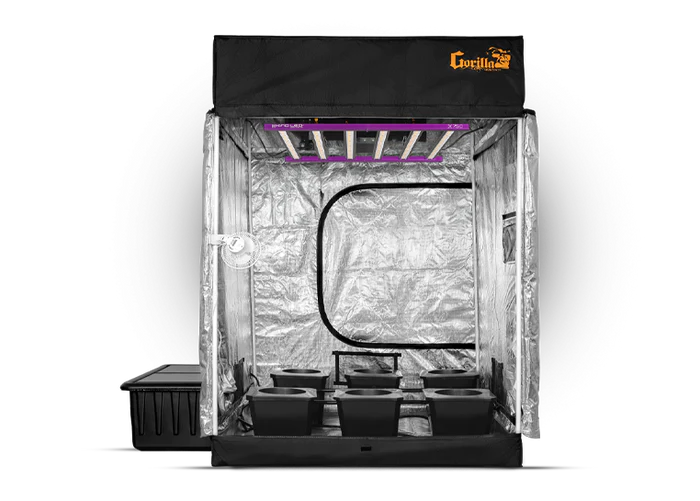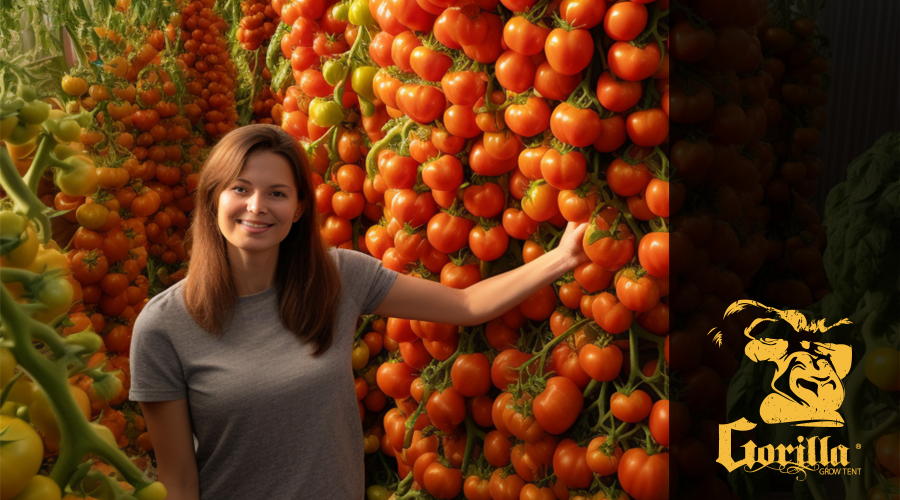
Hydroponic Strawberries: A Guide to Growing Strawberries Without Soil
Imagine enjoying fresh, juicy strawberries year-round, right in your own home. With hydroponics, this dream can become a reality. Hydroponics is a soilless method of growing plants that utilizes nutrient-rich water solutions to nourish the roots. This innovative technique offers numerous advantages over traditional soil-based gardening methods, making it an ideal choice for cultivating strawberries.
Why Grow Hydroponic Strawberries?
Hydroponic strawberries offer a plethora of benefits, including:
Year-round cultivation: Hydroponic systems can be controlled to provide optimal growing conditions, regardless of the season. This allows you to enjoy fresh strawberries whenever you crave them.
Increased yield: Hydroponic strawberries often produce higher yields than soil-grown plants. This is because the roots have direct access to nutrients and water, eliminating the stress of competition for resources.
Reduced water consumption: Hydroponics uses significantly less water than traditional soil-based methods. This is because the nutrient solution is constantly recycled and recirculated, minimizing water loss.
Enhanced plant health: Hydroponic systems provide a cleaner environment for plants, reducing the risk of diseases and pests. This contributes to healthier plants with stronger root systems.
Reduced Soil-Borne Diseases: Hydroponic systems eliminate the risk of soil-borne diseases that can plague soil-grown strawberry plants. This leads to healthier plants and a reduced need for pesticides.
Space-Efficiency: Hydroponic systems can be highly efficient in terms of space utilization. This makes them ideal for growing strawberries even in small urban spaces or apartments.
Environmental Friendliness: Hydroponics conserves water and reduces the use of pesticides and fertilizers compared to traditional soil-based methods. This makes it a more environmentally friendly approach to gardening.
Controlled Growing Conditions: Hydroponic systems allow for precise control over various growing conditions, such as nutrient levels, pH, and temperature. This enables gardeners to optimize plant growth and yield.
Flexible Growing Locations: Hydroponic systems can be set up indoors or outdoors, providing flexibility in choosing a suitable growing location. This adaptability allows gardeners to extend their growing season further.
Overall, growing hydroponic strawberries can be a more efficient and potentially more profitable method compared to traditional soil-based farming, especially in regions with limited space or challenging climatic conditions.
Getting Started with Hydroponic Strawberries
To embark on your hydroponic strawberry journey, you'll need to gather some essential equipment:
Hydroponic system: Choose a system that suits your space and expertise level. Popular options include Deep Water Culture (DWC), Nutrient Film Technique (NFT), and Ebb and Flow.
Growing medium: Select an inert medium that provides support for the strawberry plants' roots, such as perlite, coco coir, or rockwool.
Nutrient solution: Invest in a high-quality hydroponic nutrient solution specifically designed for strawberries.
Lighting: Strawberries require adequate light for photosynthesis. Use LED grow lights to provide the necessary intensity and duration of light.
Temperature and humidity control: Maintain optimal temperature and humidity levels for strawberry growth. This may require the use of heaters, humidifiers, or fans.
Planting and Care
Once you have your equipment in place, it's time to start planting and caring for your hydroponic strawberries:
Select strawberry varieties: Choose varieties that are well-suited for hydroponic cultivation. Popular options include Albion, Chandler, and Sequoia.
Germinate strawberry seeds or purchase seedlings: If starting from seeds, follow proper germination techniques. Alternatively, purchase healthy strawberry seedlings from a reputable source.
Planting: Carefully transplant seedlings into the growing medium, ensuring the roots are properly positioned.
Nutrient solution management: Regularly monitor and adjust the nutrient solution to maintain optimal levels of essential nutrients.
Pruning and pest control: Prune strawberry plants regularly to promote healthy growth and remove any diseased or damaged leaves. Monitor for pests and take appropriate action if necessary.

Harvesting and Enjoying Your Hydroponic Strawberries
After months of careful care, your hydroponic strawberries will be ready for harvest.
Identify ripe strawberries: Look for strawberries that are fully red, plump, and slightly soft to the touch.
Harvest gently: Use sharp scissors or a small knife to carefully cut the strawberries from the stem, leaving a small portion of the stem attached.
Enjoy your bounty: Wash your harvested strawberries and savor their fresh, delicious flavor.
Troubleshooting Tips for Hydroponic Strawberry Success
Nutrient Imbalance: If the plants show signs of yellowing leaves or slow growth, it could indicate a nutrient imbalance. Adjust the nutrient solution by testing pH levels and ensuring the correct balance of essential nutrients like nitrogen, potassium, and phosphorus.
Root Rot: This can occur due to overwatering or poor drainage, leading to root suffocation. Ensure proper aeration and drainage in the system, and avoid overwatering.
Pests and Diseases: Keep an eye out for common pests such as aphids, mites, or fungal diseases. Use appropriate organic pesticides or beneficial insects to control these issues.
Temperature and Humidity: Extreme temperatures or humidity levels can stress the plants. Maintain optimal conditions (around 60-80°F) and ensure good airflow to prevent humidity-related diseases.
Lighting Issues: Inadequate or excessive lighting can affect plant growth. Ensure that the plants receive the right amount of light based on their growth stage. LED grow lights are often used for indoor hydroponic setups.
Pollination: Strawberries may require hand pollination in indoor setups. Gently shake the plants or use a small brush to transfer pollen between flowers to aid fruit development.
pH Fluctuations: Fluctuations in pH can affect nutrient uptake. Regularly monitor and adjust pH levels to maintain the ideal range (usually between 5.5 and 6.5 for strawberries).
Spacing and Pruning: Overcrowding can limit airflow and lead to disease. Properly space plants and prune runners to maintain healthy growth.
Water Quality: Poor water quality with high levels of salts or contaminants can harm plants. Use filtered or purified water and regularly check water quality parameters.
Check for Environmental Stressors: Any sudden changes in environmental factors like light intensity, temperature, or humidity can stress the plants. Try to maintain stability in these conditions.
Regular monitoring, timely adjustments, and maintaining a clean and controlled environment are crucial for successful hydroponic strawberry cultivation.
Recipes and Ideas for Enjoying Your Hydroponic Strawberries
Hydroponically grown strawberries are fresh, vibrant, and delicious. Here are some delightful recipes and ideas to enjoy them:
Fresh Strawberry Salad: Combine hydroponic strawberries with mixed greens, goat cheese, toasted nuts (like walnuts or almonds), and a balsamic vinaigrette for a refreshing salad.
Strawberry Smoothie: Blend hydroponic strawberries with Greek yogurt, banana, and a splash of almond milk for a creamy and nutritious smoothie.
Strawberry Parfait: Layer chopped strawberries with Greek yogurt and granola for a wholesome and satisfying breakfast or dessert.
Chocolate-Dipped Strawberries: Melt dark chocolate and dip hydroponic strawberries halfway. Allow them to set on parchment paper for a delectable treat.
Strawberry Salsa: Combine diced strawberries with red onion, jalapeño, cilantro, lime juice, and a pinch of salt for a unique salsa to serve with grilled fish or chicken.
Homemade Strawberry Jam: Utilize your fresh strawberries to make a homemade jam. Simmer strawberries with sugar and lemon juice until thickened, then store in sterilized jars for a delightful spread.
Strawberry Shortcake: Layer sliced strawberries over a biscuit or sponge cake with whipped cream for a classic and indulgent dessert.
Strawberry Infused Water or Lemonade: Add sliced strawberries to water or lemonade for a refreshing and subtly flavored drink.
Strawberry Bruschetta: Top toasted baguette slices with a mixture of chopped strawberries, basil, balsamic glaze, and a sprinkle of feta cheese for a unique appetizer.
Strawberry Ice Cream: Make homemade ice cream using fresh strawberries for a flavorful and creamy treat.
Remember, hydroponically grown strawberries often have a vibrant flavor, so they're perfect for showcasing in both sweet and savory dishes. Enjoy exploring these recipes and get creative with your hydroponic strawberries!
Embrace the hydroponic revolution and embark on a journey of strawberry cultivation success!


